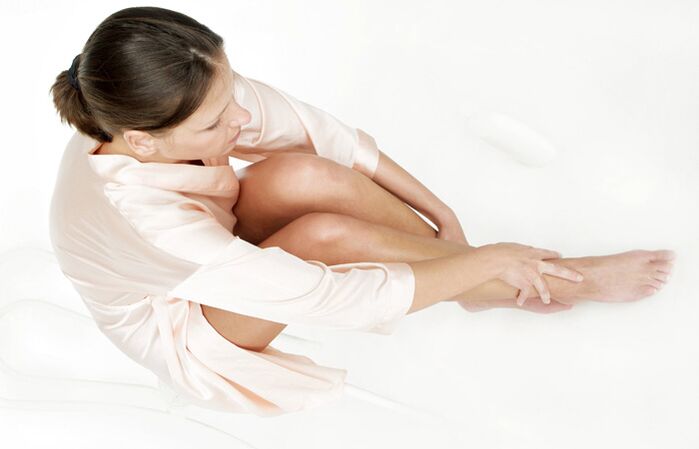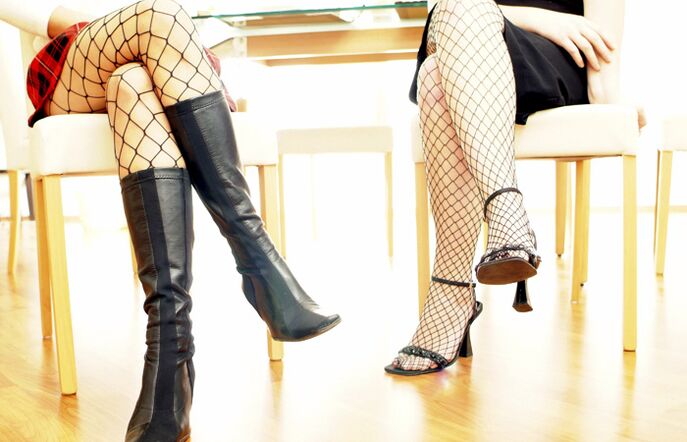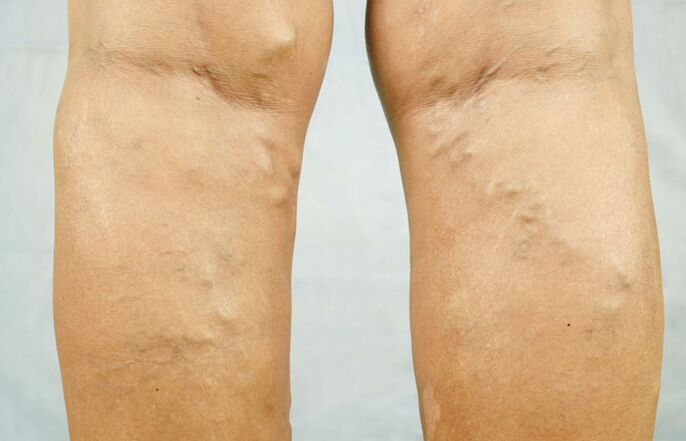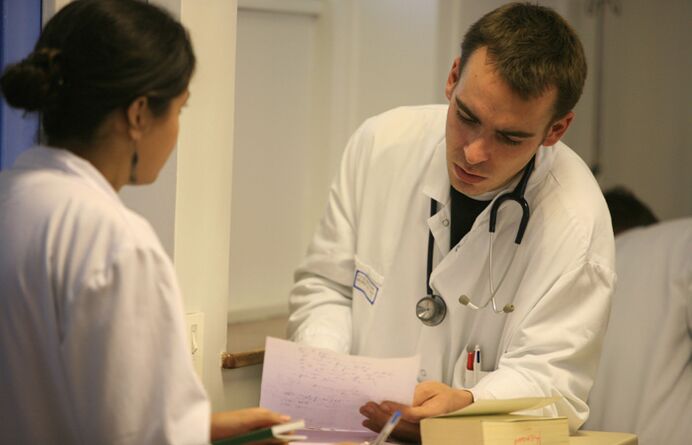Rainy autumn is coming - a period when we move less and sit a lot, wear heavy shoes throughout the day, take hot baths more often and longer. All this does not have the best effect on our blood vessels, and especially on varicose veins.
Use the slowdown in life to your advantage: take care of your foot health.

What are varicose veins?
It would seem that everything is extremely clear: these are dilated and visible veins in the legs.
However, such changes are not just a cosmetic defect, but a manifestation of insidious varicose veins.
What is happening?
The superficial veins of the lower extremities dilate, creating conditions conducive to slowing blood flow and the formation of thrombus (blood clots) in the lumen of the vessels.
Risks
Due to lack of nutrition and blood supply, trophic ulcers appear - long-term non-healing skin defects on the legs.
The resulting blood clots can break loose and travel with the blood throughout the body. What does that mean? The development of thromboembolism: the lumen of the vessel is suddenly blocked and an obstacle to blood circulation is created. Different organs are affected: an acute stroke (stroke) or infarction (myocardium, kidney, lung) can occur. The complication is life-threatening and often leads to disability.
What else do we know about varicose veins?
The older a person gets, the higher the risk of developing varicose veins. The disease has no sex or age. The disease can even occur in children, although it is quite rare. Women get sick more often than men.
A little excursion into anatomy
Our blood circulates in the systemic and pulmonary circulation.
Normal
The heart beats rhythmically and pushes blood through the vessels. Thanks to the force of gravity from top to bottom, blood flows easily through the arteries.
Having reached the legs, the blood turns around and begins to rise through the veins - from the legs to the heart. Without additional anatomical structures, this process is difficult, as the blood will simply flow back. It is to ensure normal blood circulation that nature has provided valves in the veins which allow blood to flow in only one direction: upwards.
The heart, venous walls and valves have assistants - leg muscles. Thanks to the energetic work of the muscles, the blood vessels in the legs contract and relax, pushing the blood upward from valve to valve.
For varicose veins
The walls of the veins weaken, expand and lengthen. In this case, the valves stop closing, a gap forms between them, which leads to a slowdown in blood flow. Over time, a vicious cycle develops: the slower the blood circulates, the more the veins stretch and the more poorly the valves function.
Our veins are under attack
Varicose veins are believed to be a hereditary disease (in 98% of cases). A certain gene is passed down to us from our ancestors, causing weakness in the vein wall and inferiority of the venous valves. However, even in this case, the disease does not always develop.
Additional adverse factors:
- Overweight or obese.
- A person engages in heavy physical labor, lifts weights and stands for a long time.
- Intense sports, leg injuries.
- Sedentary lifestyle: a person is forced to sit for a long time - for example 6-8 hours a day in front of a computer or in a car.
- In women - wearing heels, pregnancy and childbirth, taking hormonal contraceptives (blood thickens).
- Chronic constipation.
- Dietary features: increased amount of carbohydrates, lack of vegetables and fruits. Because the body does not receive the substances necessary to restore the structure of the vein wall.

How to recognize varicose veins? What to do?
The disease has several stages of development with the gradual addition of new symptoms. Only a doctor should understand this.
You can independently assess the health of your veins and/or suspect the development of a disease.
When to go to the doctor
At the first signs of the disease: swelling, heaviness or pain in the legs, sometimes cramps in the calf muscles. In this case, there may be no visible changes in the veins of the lower extremities.
And of course, you should see a doctor as soon as possible if veins appear on your legs. Moreover, it does not matter which veins are visible and to what extent they are visible. These may be dilated veins with the formation of bluish nodules. Sometimes the changes are minor in the form of a vascular pattern - the so-called "stars" or "mesh", which are the first signs of varicose veins.

Correct diagnosis is the basis of successful treatment
A Doppler ultrasound and a duplex angioscan of the leg veins are performed. Research is informative from the early stage of the disease: when there are only complaints and there are no visible changes in the veins.
From tablets and ointments to surgery
For varicose veins, contactphlebologist. The sooner the doctor takes care of your foot health, the more effective the treatment will be.
The "gold standard" is the surgical removal of varicose veins, which has been practiced for decades. The procedure is somewhat traumatic and is performed in a hospital setting under anesthesia with incisions and sutures.
However, modern medicine takes a gentle and comprehensive approach to solving the problem.
The choice and combination of methods depends on the severity of the disease:
- Phlebotonics and phleboprotectors are prescribed - drugs that improve the condition and tone of the vein wall, thereby increasing the outflow of venous blood from the lower extremities.
- Anticoagulants, inflammation reducers and pain relievers are used.
- Wearing therapeutic compression stockings (stockings/tights). The class is chosen by the doctor depending on the stage of the disease or for prevention purposes.
- Minimally invasive surgical interventions: sclerotherapy, endovenous laser coagulation, obliteration of veins by radiofrequency. The altered veins are "glued together" or "sealed". The procedure lasts about an hour and after a while the patient goes home. Advantages: no cuts, infections, suppurations. Thanks to technology, the risk of complications is close to zero.
Can varicose veins be cured?
No. If a person has inherited a disease from his ancestors, no doctor can cure that disease forever.
You can remove the consequences of the disease, stop its further development and get rid of complications. However, the risk of relapse remains quite high. So follow your doctor's recommendations and try to avoid situations that have a negative impact on the health of your veins.
Flying approach: prevention of varicose veins
Almost everyone is at risk of developing varicose veins, so it wouldn't hurt for all of us to follow simple rules in certain situations.

During pregnancy
Hormonal changes and compression of the inferior vena cava by the pregnant uterus lead to stagnation of blood in the veins of the lower extremities.
How to proceed
Select support stockings with your doctor. When signs of illness appear, phlebotonics are prescribed.
In a standing or sedentary occupation, lifting heavy loads
Blood circulation deteriorates and the load in the lower extremities increases.
How to proceed
Avoid tight clothing and socks with tight elastics. Do not wear shoes with heels higher than six cm. During labor, move more often, change positions and do simple exercises.
When sitting, avoid crossing your legs, crossing your legs, or putting one or both legs under you.
With a sedentary lifestyle
Blood stagnates in the veins of the lower limbs.
How to proceed
Play sports that put dynamic pressure on your lower leg. By contracting and relaxing, the muscles improve the circulation of blood in the vessels. Swimming, running, fitness walking and cycling are suitable.
With hereditary predisposition
There is a high probability that the disease gene will manifest itself sooner or later. Moreover, it does not matter which veins were weakened in our ancestors - hemorrhoids, in the legs or in the groin.
How to proceed
Visit a phlebologist once a year for a preventive examination. Try to move more and avoid situations that harm your veins.
P. S.Varicose veins are a "silent" disease. For a long time, the disease does not cause pain, does not cause inconvenience and does not interfere with life. Unless the "mesh" is perceived as an annoying aesthetic defect. During this time, a timely visit to the doctor will help avoid many problems.

















